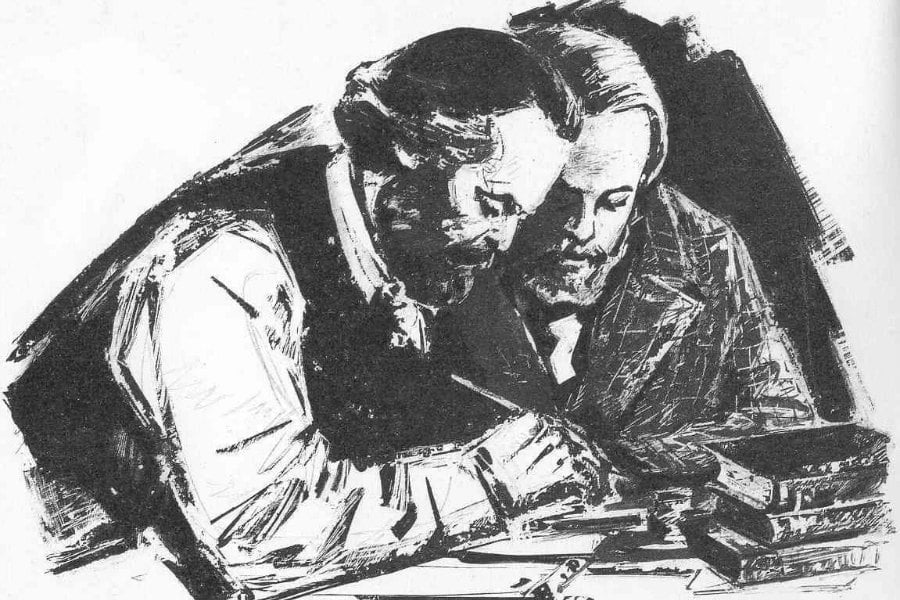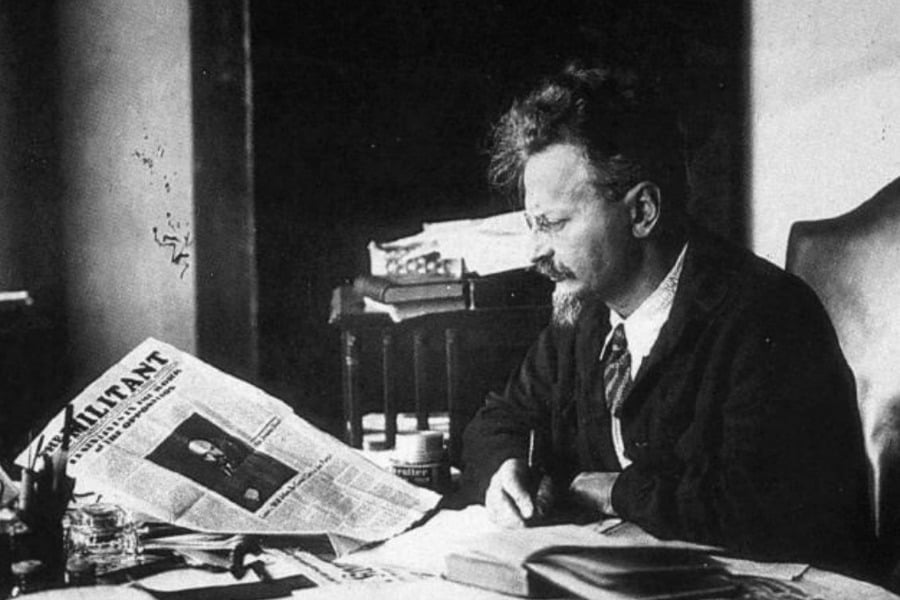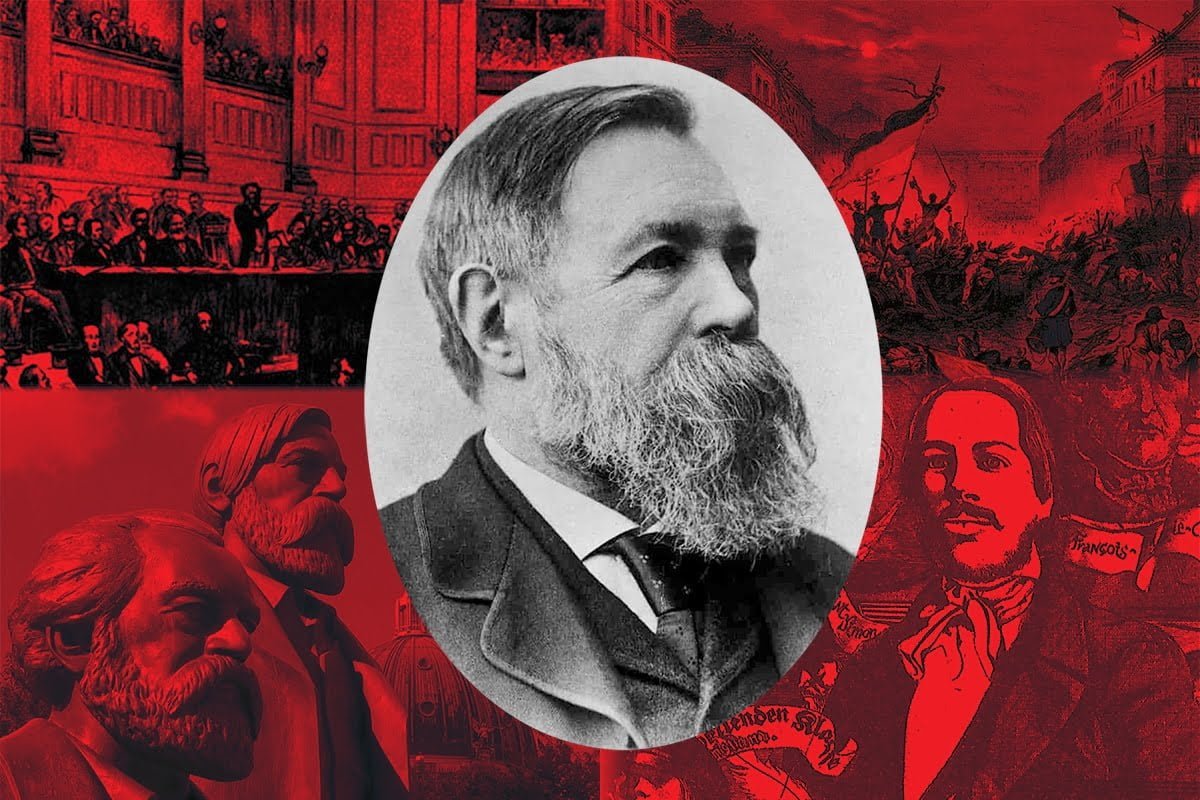Commissioned by the Communist League in London and written by Karl Marx and Friedrich Engels in 1847-1848, this pamphlet set out the fundamental principles and tactics of the nascent Communist movement of the period, the “spectre” haunting all of Europe.
Unlike many other works of the time, the Communist Manifesto remains one of the most influential works of literature ever published. Despite being written almost 170 years ago, the ideas, method, and political lessons contained within it remain remarkably fresh. Although a few references to political figures of the time and some (but not all) of the concrete political demands put forward at the end of chapter 2 have been superseded by events, the great bulk of the text feels as if it could have been written only yesterday, with its explanation of the crushing power of the capitalist world market, the commodification of the labour and abilities of human beings, and the ever-growing divide between the rich and poor. Regardless of its date of publication, the Communist Manifesto is still very much a vital weapon in the arsenal of revolutionaries all over the world.
Arguably, in its message the Communist Manifesto is even more relevant today than when it was written. In 1848, Europe itself stood on the threshold of a series of democratic revolutions which would shake the old Absolutist order, but could not yet bring the working class to power. Today, with the global capitalist system in deep crisis, the Manifesto’s final line has never felt more powerful and urgent:
Workers of all countries, unite!
Chapter 1: Bourgeois and Proletarians
For Marx and Engels, “the [written] history of all hitherto existing society is the history of class struggles”. In this chapter they set out a sweeping history of class society, in particular the struggle of the bourgeoisie against the rotten feudal system, and explain how the bourgeoisie, having taken power in one country, is forced by its own system to revolutionise production on a world scale and with this, produces “its own grave-diggers”: the proletariat.
Study questions:
- How do Marxists define “class”?
- What are the bourgeoisie and proletariat?
- How did capitalism come into being?
- What relationship exists between economic development and the political struggle? Can we find examples of this in society today?
- What do Marx and Engels mean when they write, “The bourgeoisie, historically, has played a most revolutionary part”?
- How does this chapter predict globalisation?
- In what sense is capitalism “like the sorcerer who is no longer able to control the powers of the nether world whom he has called up by his spells”?
- How is the proletariat formed under capitalism?
- What is the role of trades unions for Marx and Engels?
Chapter 2: Proletarians and Communists
In this chapter, Marx and Engels first explain the role of Communists in the class struggle and the confront some of the main accusations levelled at Communists by their bourgeois detractors of the time. In answering their critics, Marx and Engels also offer clarification and explanation of their own ideas, for example on the question of what is meant by the “abolition of private property” and of the “bourgeois family”: questions which are still raised to this day. Finally, Marx and Engels set out a list of demands to be raised by Communists active in the movement.
Study questions:
- What lesson(s) should we draw from the statement that “The Communists do not form a separate party opposed to the other working-class parties”?
- How can Communists “point out and bring to the front the common interests of the entire proletariat, independently of all nationality”?
- What is “capital”? What is “wage-labour”? And how do the two relate to each other?
- What place would the individual have in a Communist society?
- What do Marx and Engels mean by “abolition of the family”?
- What is the role of the state, and what form would the state take in a Communist society?
Chapter 3-4: Socialist and Communist Literature & the Position of the Communists in Relation to the Various Existing Opposition Parties
In the final chapters of the Communist Manifesto, Marx and Engels analyse other Socialist trends present in society. In doing so, Marx and Engels give us even more insight into the specific characteristics of their own ideas. Today, some of the trends criticised have disappeared and so have little relevance today. However, some, and “bourgeois socialism” in particular continue to play a very powerful (and pernicious) role in the labour movement and so Marx’ and Engels’ criticisms retain their full force to this day.
Study questions:
- In what sense is petty-bourgeois socialism “both reactionary and utopian”?
- What is “true” socialism? What gave it such peculiar characteristics?
- What modern examples of “bourgeois socialism” have we found in recent political events? What standpoint should Communists take to this trend?
- What positive things can we say about “Critical-Utopian” Socialism? What are its failings?
- Why did Marx and Engels give support to bourgeois democratic and nationalist parties in certain countries as well as proletarian movements like the Chartists?







